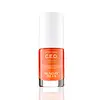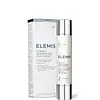What's inside
What's inside
 Key Ingredients
Key Ingredients

 Benefits
Benefits

 Concerns
Concerns

 Ingredients Side-by-side
Ingredients Side-by-side

Water
Skin ConditioningTetrahexyldecyl Ascorbate
AntioxidantSqualane
EmollientPolyglyceryl-6 Distearate
EmulsifyingPEG-8 Beeswax
EmulsifyingPPG-12/Smdi Copolymer
EmollientGlycine Soja Sterols
EmollientSodium Phytate
Tocopherol
AntioxidantAcetamidoethoxyethanol
HumectantHydroxyethyl Acrylate/Sodium Acryloyldimethyl Taurate Copolymer
Emulsion StabilisingSodium Acrylate/Sodium Acryloyldimethyl Taurate Copolymer
Emulsion StabilisingJojoba Esters
EmollientGlycolic Acid
BufferingCaprylyl Glycol
EmollientCetyl Alcohol
EmollientPolyglyceryl-3 Beeswax
EmulsifyingChlorphenesin
AntimicrobialGlycerin
HumectantPolysorbate 60
EmulsifyingSorbitan Isostearate
EmulsifyingSaccharide Isomerate
HumectantCitrus Aurantium Dulcis Peel Oil
MaskingCitrus Tangerina Peel Oil
MaskingLinalool
PerfumingLimonene
PerfumingPhenoxyethanol
PreservativeWater, Tetrahexyldecyl Ascorbate, Squalane, Polyglyceryl-6 Distearate, PEG-8 Beeswax, PPG-12/Smdi Copolymer, Glycine Soja Sterols, Sodium Phytate, Tocopherol, Acetamidoethoxyethanol, Hydroxyethyl Acrylate/Sodium Acryloyldimethyl Taurate Copolymer, Sodium Acrylate/Sodium Acryloyldimethyl Taurate Copolymer, Jojoba Esters, Glycolic Acid, Caprylyl Glycol, Cetyl Alcohol, Polyglyceryl-3 Beeswax, Chlorphenesin, Glycerin, Polysorbate 60, Sorbitan Isostearate, Saccharide Isomerate, Citrus Aurantium Dulcis Peel Oil, Citrus Tangerina Peel Oil, Linalool, Limonene, Phenoxyethanol
Water
Skin ConditioningLactic Acid
BufferingPrunus Amygdalus Dulcis Oil
Skin ConditioningSodium Hydroxide
BufferingPolyacrylate Crosspolymer-6
Emulsion StabilisingHydroxyethyl Acrylate/Sodium Acryloyldimethyl Taurate Copolymer
Emulsion StabilisingPhytic Acid
Phenoxyethanol
PreservativeGlycerin
HumectantBetula Alba Juice
AstringentCitric Acid
BufferingPEG-40 Hydrogenated Castor Oil
EmulsifyingTrideceth-9
EmulsifyingSodium Benzoate
MaskingTocopherol
AntioxidantAmmonium Acryloyldimethyltaurate/Vp Copolymer
Tartaric Acid
BufferingParfum
MaskingPotassium Sorbate
PreservativeHelianthus Annuus Seed Oil
EmollientPolysorbate 60
EmulsifyingSorbitan Isostearate
EmulsifyingYeast Extract
Skin ConditioningPropylene Glycol
HumectantT-Butyl Alcohol
PerfumingPapain
Skin ConditioningHexyl Cinnamal
PerfumingLimonene
Perfuming1,2-Hexanediol
Skin ConditioningCaprylyl Glycol
EmollientBehenyl Alcohol
EmollientBenzyl Salicylate
PerfumingButyrospermum Parkii Butter
Skin ConditioningChlorphenesin
AntimicrobialTuber Aestivum Extract
Skin ProtectingAlpha-Isomethyl Ionone
PerfumingHydrogenated Castor Oil
EmollientStearyl Alcohol
EmollientProtease
ExfoliatingSubtilisin
Skin ConditioningTocopheryl Acetate
AntioxidantCitrus Aurantium Amara Leaf/Twig Oil
MaskingWater, Lactic Acid, Prunus Amygdalus Dulcis Oil, Sodium Hydroxide, Polyacrylate Crosspolymer-6, Hydroxyethyl Acrylate/Sodium Acryloyldimethyl Taurate Copolymer, Phytic Acid, Phenoxyethanol, Glycerin, Betula Alba Juice, Citric Acid, PEG-40 Hydrogenated Castor Oil, Trideceth-9, Sodium Benzoate, Tocopherol, Ammonium Acryloyldimethyltaurate/Vp Copolymer, Tartaric Acid, Parfum, Potassium Sorbate, Helianthus Annuus Seed Oil, Polysorbate 60, Sorbitan Isostearate, Yeast Extract, Propylene Glycol, T-Butyl Alcohol, Papain, Hexyl Cinnamal, Limonene, 1,2-Hexanediol, Caprylyl Glycol, Behenyl Alcohol, Benzyl Salicylate, Butyrospermum Parkii Butter, Chlorphenesin, Tuber Aestivum Extract, Alpha-Isomethyl Ionone, Hydrogenated Castor Oil, Stearyl Alcohol, Protease, Subtilisin, Tocopheryl Acetate, Citrus Aurantium Amara Leaf/Twig Oil
 Reviews
Reviews

Ingredients Explained
These ingredients are found in both products.
Ingredients higher up in an ingredient list are typically present in a larger amount.
Caprylyl Glycol is a humectant and emollient, meaning it attracts and preserves moisture.
It is a common ingredient in many products, especially those designed to hydrate skin. The primary benefits are retaining moisture, skin softening, and promoting a healthy skin barrier.
Though Caprylyl Glycol is an alcohol derived from fatty acids, it is not the kind that can dry out skin.
This ingredient is also used as a preservative to extend the life of products. It has slight antimicrobial properties.
Learn more about Caprylyl GlycolChlorphenesin is a synthetic preservative. It helps protect a product against bacteria in order to extend shelf life. In most cases, Chlorphenesin is paired with other preservatives such as phenoxyethanol and caprylyl glycol.
Chlorphenesin is a biocide. This means it is able to help fight the microorganisms on our skin. It is also able to fight odor-releasing bacteria.
Chlorphenesin is soluble in both water and glycerin.
Studies show Chlorphenesin is easily absorbed by our skin. You should speak with a skincare professional if you have concerns about using Chlorphenesin.
Learn more about ChlorphenesinGlycerin is already naturally found in your skin. It helps moisturize and protect your skin.
A study from 2016 found glycerin to be more effective as a humectant than AHAs and hyaluronic acid.
As a humectant, it helps the skin stay hydrated by pulling moisture to your skin. The low molecular weight of glycerin allows it to pull moisture into the deeper layers of your skin.
Hydrated skin improves your skin barrier; Your skin barrier helps protect against irritants and bacteria.
Glycerin has also been found to have antimicrobial and antiviral properties. Due to these properties, glycerin is often used in wound and burn treatments.
In cosmetics, glycerin is usually derived from plants such as soybean or palm. However, it can also be sourced from animals, such as tallow or animal fat.
This ingredient is organic, colorless, odorless, and non-toxic.
Glycerin is the name for this ingredient in American English. British English uses Glycerol/Glycerine.
Learn more about GlycerinThis is a synthetic polymer. It helps improve the texture of products by adding thickness and gel-like feel.
It is also an emulsifer, meaning it prevents ingredients such as oil and water from separating. It also helps evenly disperse other ingredients.
Limonene is a fragrance that adds scent and taste to a formulation.
It's found in the peel oil of citrus fruits and other plants such as lavender and eucalyptus. The scent of limonene is generally described as "sweet citrus".
Limonene acts as an antioxidant, meaning it helps neutralize free radicals.
When exposed to air, oxidized limonene may sensitize the skin. Because of this, limonene is often avoided by people with sensitive skin.
The term 'fragrance' is not regulated in many countries. In many cases, it is up to the brand to define this term. For instance, many brands choose to label themselves as "fragrance-free" because they are not using synthetic fragrances. However, their products may still contain ingredients such as essential oils that are considered a fragrance.
Learn more about LimonenePhenoxyethanol is a preservative that has germicide, antimicrobial, and aromatic properties. Studies show that phenoxyethanol can prevent microbial growth. By itself, it has a scent that is similar to that of a rose.
It's often used in formulations along with Caprylyl Glycol to preserve the shelf life of products.
Polysorbate 60 is used to help stabilize products. It is a surfactant and emulsifier. These properties help keep ingredients together in a product. Surfactants help reduce surface tension between ingredients with different states, such as liquids and solids. Emulsifiers help prevent oils and waters from separating.
Polysorbate 60 is sorbitol-based and created from the ethoxylation of sorbitan. Ethoxylation is a chemical reaction used to add ethylene oxide. Sorbitan is a the dehydrated version of sorbitol, a sugar found in fruits.
In this case, the 60 comes from reacting 60 units of ethylene oxide with sorbitan.
Polysorbates are commonly used in medicine and foods.
Learn more about Polysorbate 60Sorbitan Isostearate is an emulsifer and cleaning agent. It is created from isostearic acid and sorbitol.
As an emulsifier, Sorbitan Isostearate prevents oils and water from separating.
Due to its isostearic acid base, it may not be safe for Malassezia or fungal acne.
Learn more about Sorbitan IsostearateTocopherol (also known as Vitamin E) is a common antioxidant used to help protect the skin from free-radicals and strengthen the skin barrier. It's also fat soluble - this means our skin is great at absorbing it.
Vitamin E also helps keep your natural skin lipids healthy. Your lipid skin barrier naturally consists of lipids, ceramides, and fatty acids. Vitamin E offers extra protection for your skin’s lipid barrier, keeping your skin healthy and nourished.
Another benefit is a bit of UV protection. Vitamin E helps reduce the damage caused by UVB rays. (It should not replace your sunscreen). Combining it with Vitamin C can decrease sunburned cells and hyperpigmentation after UV exposure.
You might have noticed Vitamin E + C often paired together. This is because it is great at stabilizing Vitamin C. Using the two together helps increase the effectiveness of both ingredients.
There are often claims that Vitamin E can reduce/prevent scarring, but these claims haven't been confirmed by scientific research.
Learn more about TocopherolWater. It's the most common cosmetic ingredient of all. You'll usually see it at the top of ingredient lists, meaning that it makes up the largest part of the product.
So why is it so popular? Water most often acts as a solvent - this means that it helps dissolve other ingredients into the formulation.
You'll also recognize water as that liquid we all need to stay alive. If you see this, drink a glass of water. Stay hydrated!
Learn more about Water